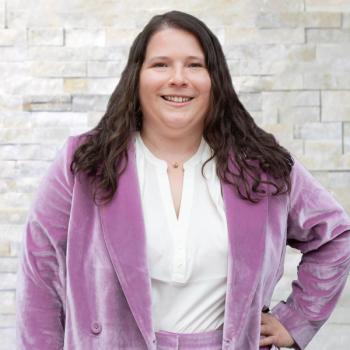
Best of the Week: SciX Conference, Water Molecule Behavior, Dwarf Planets
Top articles published this week include preview the upcoming SciX Conference keynote address, a recent study that offered new insights into water molecule organization at saltwater interfaces, and a news story about recent spectroscopic observations seen on the surfaces of dwarf planets.
This week, Spectroscopy published various articles that covered many topics in analytical spectroscopy. This week’s articles preview the upcoming SciX and Gulf Coast Conferences. Much attention is given to spectroscopic techniques including vibrational sum-frequency generation (VSFG) spectroscopy and inductively coupled plasma–optical emission spectroscopy (ICP-OES). Below, we’ve highlighted some of the most popular articles, according to our readers and subscribers. Happy reading!
James Hendler of Rensselaer Polytechnic Institute (RPI) was announced as the keynote speaker for the SciX 2024 conference in Raleigh, North Carolina. His talk will discuss the advent of artificial intelligence (AI), and how it is being used in analytical chemistry and analytical spectroscopy (1). His talk will highlight the benefits and drawbacks of AI, and why a balanced approach with AI will be the best way to move forward (1).
A study led by Yair Litman, Kuo-Yang Chiang, and colleagues offers new insights into water molecule organization at saltwater interfaces. Using advanced vibrational sum-frequency generation (VSFG) spectroscopy and neural network-assisted molecular dynamics (MD) simulations, the research challenges the assumption that ions accumulate directly at the air-water interface (2). Instead, the ions are concentrated just below the surface, creating distinct stratification (2). This finding revises the understanding of ion behavior and water reorganization, impacting models related to ocean evaporation, atmospheric chemistry, and electrolyte systems (2). The study refines knowledge of molecular interactions at water interfaces, with broad environmental and technological implications.
Wood classification is important to the global economy. In this article, a research team from Brazil used Fourier transform infrared (FT-IR) spectroscopy to classify five wood species native to Brazil: Angelim-pedra (Hymenolobium petraeum Ducke), Cambara (Gochnatia polymorpha), Cedrinho (Erisma uncinatum), Champagne (Dipteryx odorata), and Peroba do Norte (Goupia glabra Aubl) (3).
A team led by J. P. Emery used the James Webb Space Telescope (JWST) to study the surfaces of three dwarf planets—Sedna, Gonggong, and Quaoar—revealing distinct surface compositions. Spectroscopic data from 0.7 to 5.2 micrometers showed the presence of various ices and hydrocarbons on each body (4). Sedna had abundant ethane, acetylene, and complex organics from methane irradiation (4). Gonggong showed weaker ethane signals but notable CO2 and water ice (4). Quaoar displayed fewer hydrocarbons, with strong water ice and possible hydrogen cyanide (4). These findings suggest methane on these planets is replenished from internal sources and shaped by irradiation, offering insights into their surface chemistry and broader Kuiper Belt processes.
On October 16th from 9:30 am – 9:55 am, Brian Rohrback of Infometrix, Inc. will give a talk about the impact of machine learning on spectrometer calibration and Jesus Acapulco of Analytik Jena will give a talk on using inductively coupled plasma–optical emission spectroscopy (ICP-OES) to determine the composition of water used in fracking. We preview both sessions here (5).
References
- Wetzel, W. SciX 2024 Announces Keynote Speaker James Hendler’s Opening Talk. Spectroscopy. Available at:
https://www.spectroscopyonline.com/view/scix-2024-announces-keynote-speaker-james-hendler-s-opening-talk (accessed 2024-10-03). - Workman, Jr., J. A New Discovery of Water Molecule Behavior at Saltwater Surfaces: Spectroscopy Technique Sheds Light on Electrolyte Interfaces. Spectroscopy. Available at:
https://www.spectroscopyonline.com/view/a-new-discovery-of-water-molecule-behavior-at-saltwater-surfaces-spectroscopy-technique-sheds-light-on-electrolyte-interfaces (accessed 2024-10-03). - Wetzel, W. FT-IR Spectroscopy to Accurately Identify Native Commercial Wood Species. Spectroscopy. Available at:
https://www.spectroscopyonline.com/view/ft-ir-spectroscopy-to-accurately-identify-native-commercial-wood-species (accessed 2024-10-03). - Workman, Jr., J. New Spectroscopic Insights into Dwarf Planets: Uncovering Ices and Organics on Sedna, Gonggong, and Quaoar. Spectroscopy. Available at:
https://www.spectroscopyonline.com/view/new-spectroscopic-insights-into-dwarf-planets-uncovering-ices-and-organics-on-sedna-gonggong-and-quaoar (accessed 2024-10-03). - Wetzel, W. Gulf Coast Conference 2024: Previewing Two Oral Sessions on Machine Learning and Instrument Calibration & Hydraulic Fracturing Fluids. Spectroscopy. Available at:
https://www.spectroscopyonline.com/view/gulf-coast-conference-2024-previewing-two-oral-sessions-on-machine-learning-and-instrument-calibration-hydraulic-fracturing-fluids (accessed 2024-10-03).
Newsletter
Get essential updates on the latest spectroscopy technologies, regulatory standards, and best practices—subscribe today to Spectroscopy.



